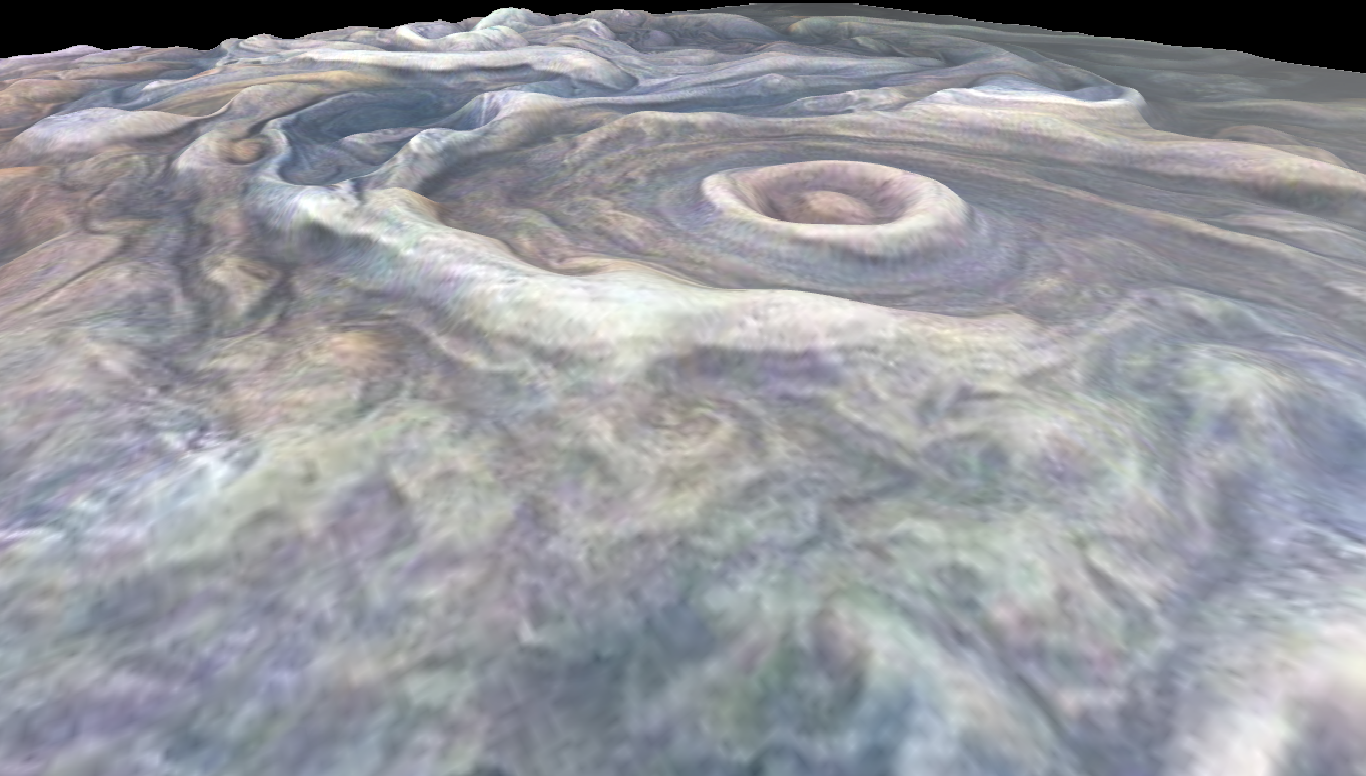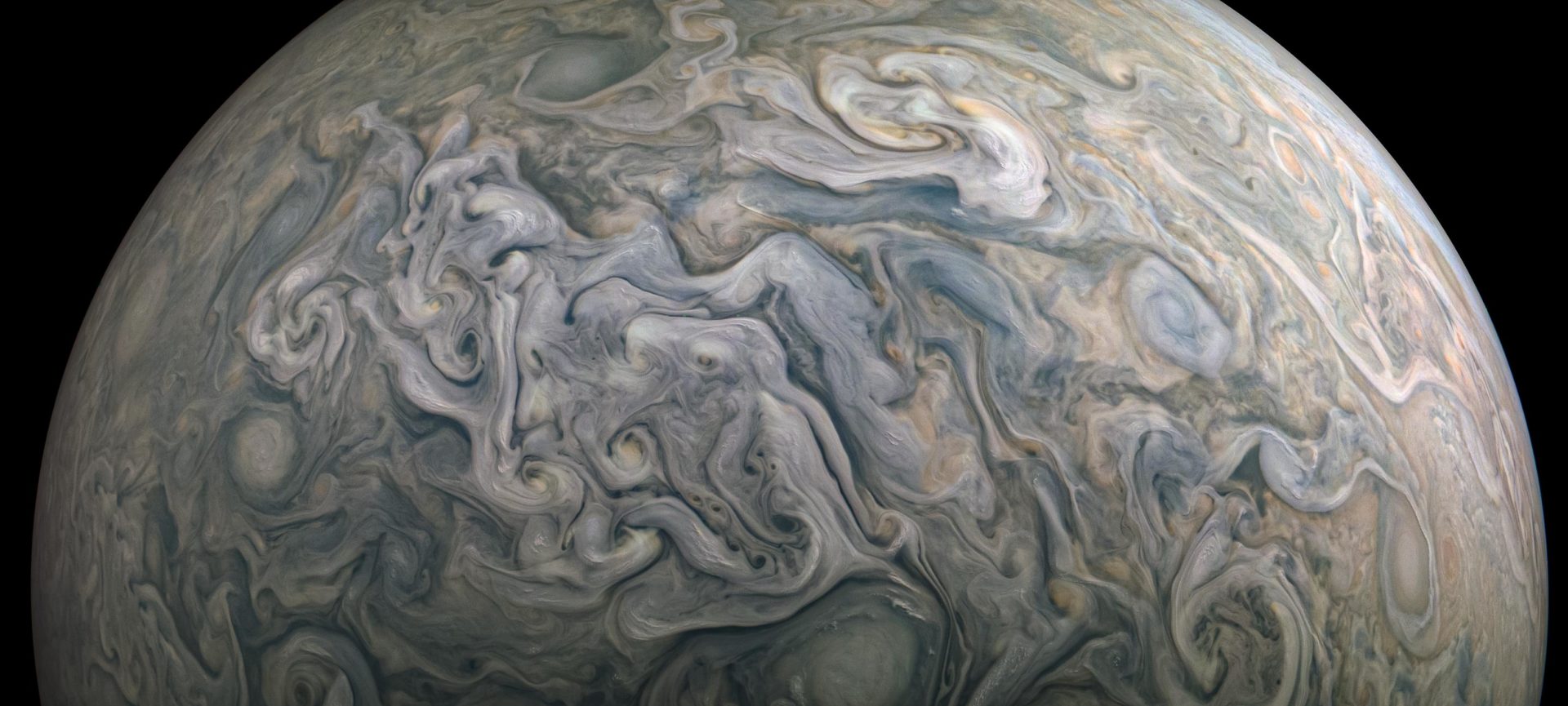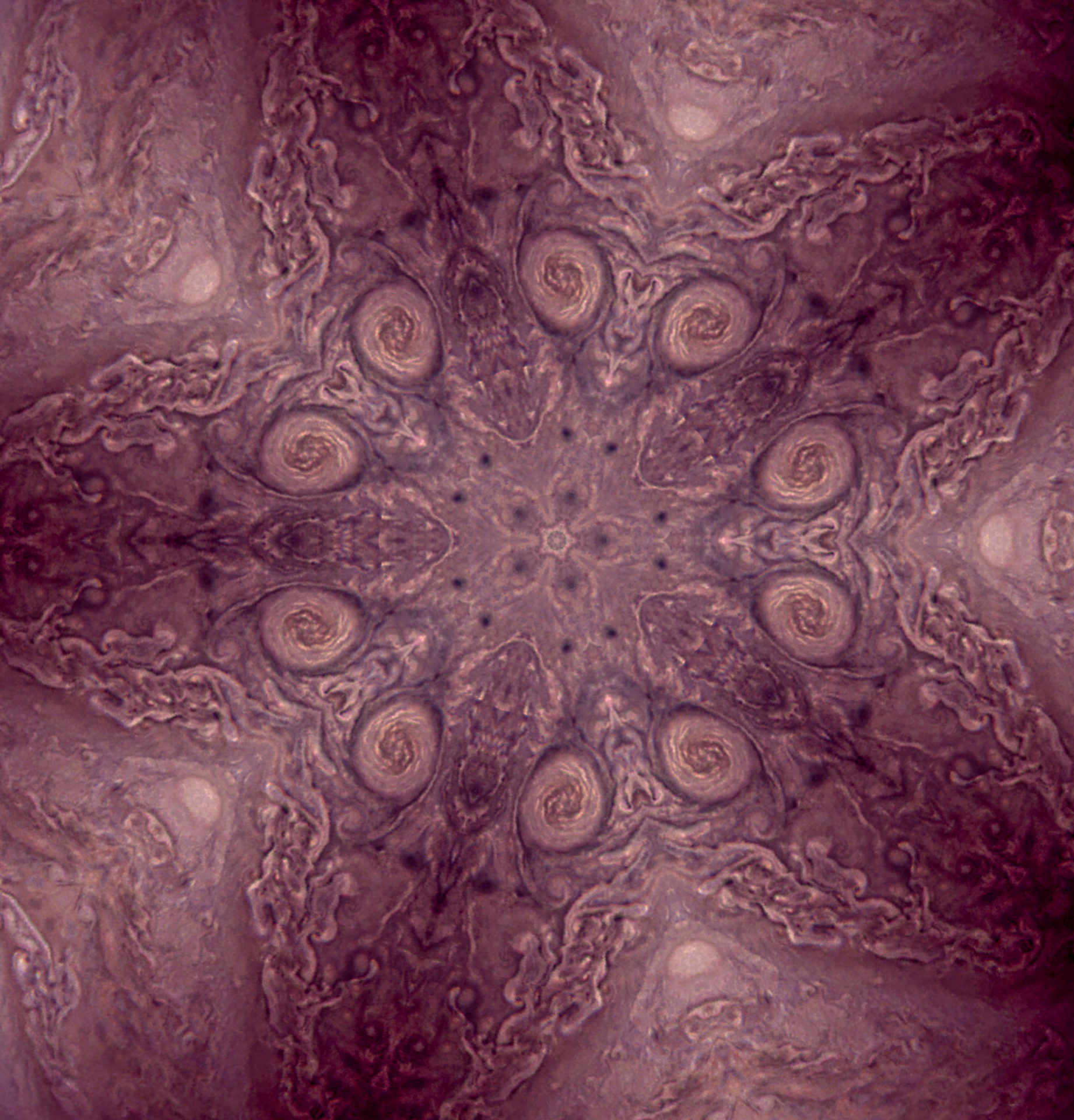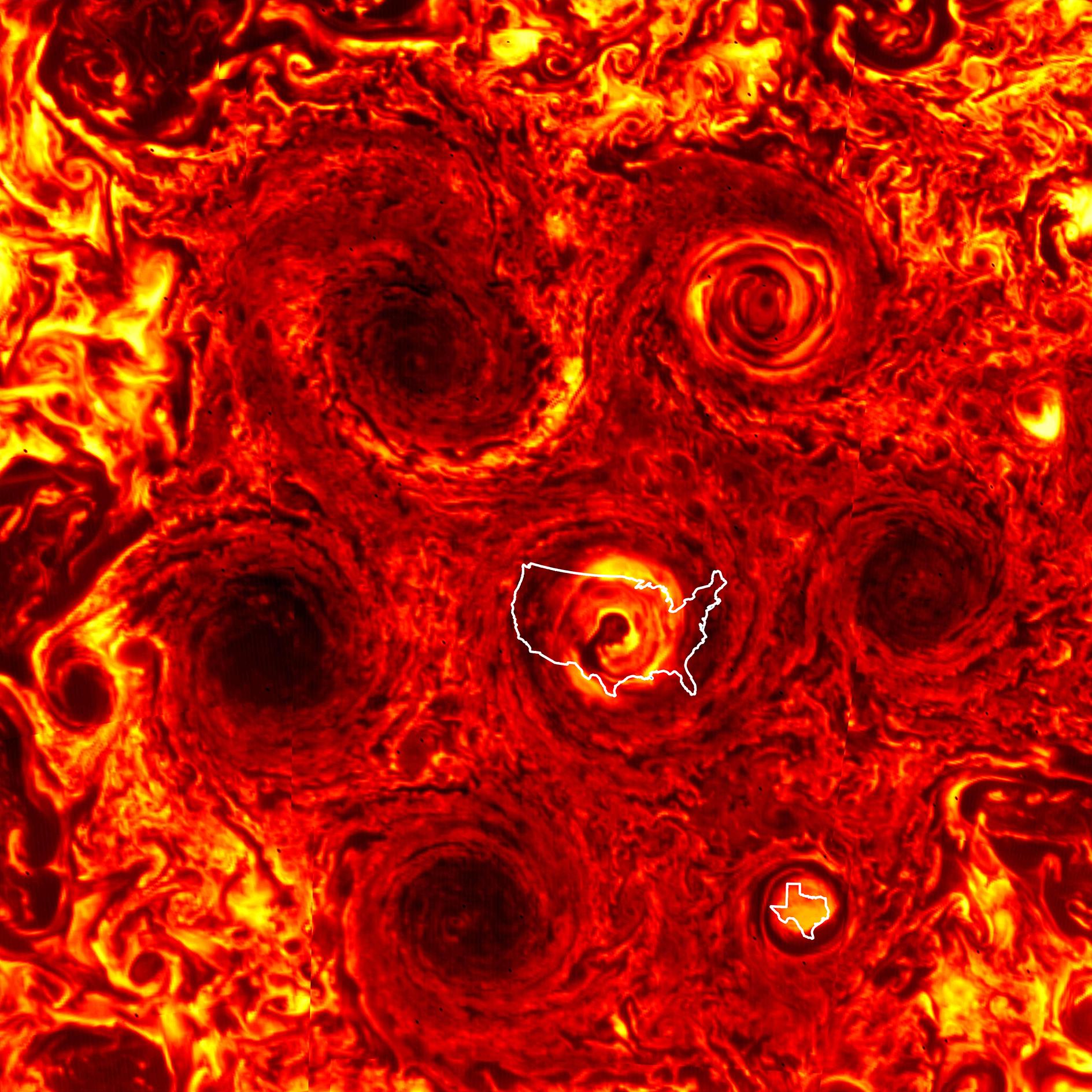
Curious About: Juno
The launch of Juno combines space, art, and citizen science
Published04/20/2020 , by Thaddeus LaCoursiere, planetarium educator
Head outside in the predawn hours and look in the sky low to the southeast. There you can spot the largest and first planet to form in our solar system: Jupiter. With binoculars or a telescope, you can see bright moons orbiting around Jupiter; stripes and bands in its atmosphere; or its famous hurricane, the Great Red Spot. No matter how you look, you’ll never see below Jupiter’s cloud tops, which extend hundreds of miles into the murky depths of this gas giant. If you really want to understand Jupiter—how it formed, what it’s made of, what the interior is like, why storms can last for hundreds of years—you need to be able to study all of it, from the tops of the clouds to everything beneath.
To help answer these questions, scientists and engineers designed, built, and launched the Juno spacecraft to Jupiter. Juno has a suite of instruments to measure Jupiter’s magnetic field, aurora, composition, mass, gravitational pull, and it can even test Einstein’s Theory of General Relativity.

Juno spacecraft and its science instruments.
Image credit: NASA/JPL
Since arriving at Jupiter in July of 2016, Juno has made 26 orbits around the gas giant. During each orbit, Juno gets incredibly close to Jupiter—within 6,000 miles of its cloud tops!—and then continues out to the farthest point in its orbit, which is 5 million miles away from Jupiter. This stretched-out orbit was designed to let Juno gather valuable data while also avoiding Jupiter’s strong magnetic field that damages the spacecraft each time it flies through it.
The JunoCam is one of the most exciting instruments because it was built for citizen scientists to take part in studying Jupiter. Each person that processes an image from JunoCam chooses a unique method to interpret Jupiter. Some people might emphasize different parts of Jupiter, or they might utilize the raw data to create an image of the planet exactly how you would see it floating in space, or they might play with the data to make the most creative (and trippy) images possible. A small selection of images are below, and you can find the rest at https://www.missionjuno.swri.edu/.
The most recent flyby, called a “perijove,” happened on April 10, 2020, and scientists are still processing the data to reveal what new discoveries Juno has made. In just the past few months though, Juno has discovered a lot!
For example, in December of 2019 during perijove 24, images revealed a new cyclone forming at Jupiter’s south pole, bringing the total there to six. This new weather data helps scientists not only understand the pressures underneath the cloud tops, but it also helps them build models of weather for Jupiter, Earth and other planets. To accomplish this flyby, engineers and navigators here on Earth had to carefully fire Juno’s rocket engines to change its orbit to avoid Jupiter’s shadow which would have blocked sunlight from Juno’s solar panels, drained its batteries, and caused the spacecraft to freeze to death. After a 10 ½ hour rocket burn, Juno’s velocity was changed by just 126 mph—a fraction of the 120,000 mph it’s moving—but enough to let it survive and transmit data back to Earth.
A group of scientists have spent three years analyzing the data from Juno’s first eight flybys, showing that there’s more water in Jupiter than first suspected: about 0.25 percent of all of the molecules in Jupiter’s atmosphere. This may not sound like much, but it’s almost three times the amount of water in the Sun’s atmosphere (based on the individual parts of water—hydrogen and oxygen—found in the Sun). Since the models of how Jupiter formed depend on how much water Jupiter collected, scientists can use the new information to narrow down the most plausible explanations for both Jupiter’s formation, 4.5 billion years ago. Scientists can also use the data from Jupiter to understand the formation of other gas giants, including those around other stars!
A word of caution: The measurements were made at Jupiter’s equator, and scientists are waiting to get more data after perjove 26 from Jupiter’s northern hemisphere to refine their models.
This movie is a combination of 36 images taken over 2.5 hours, and reconstruct what Juno saw during perijvoe 22 in September 2019. Jupiter is pale orange and white in natural color, so each image is color and contrast enhanced to bring out more detail. The large black “hole” seen is the shadow of Io, one of Jupiter’s 79 known moons. Io’s shade happened to be in the way when Juno was making its flyby.
Credit: Gerald Eichstädt / NASA / JPL / SwRI / MSSS / SPICE
Juno’s mission will continue until July 30, 2021, at which point Juno will be deorbited into Jupiter, burning up in the atmosphere. Luckily, the end is years away and long after Juno is gone, scientists and amateurs across the world will analyse its data to make incredible new discoveries. So, the next time you get up in the morning, head outside and take a look at a planet 500 million miles away, where a little spacecraft is changing our view of the universe.
You can find out more about Juno and its discoveries at the links below:
- https://www.nasa.gov/mission_pages/juno/main/index.html
- https://www.missionjuno.swri.edu/
- https://www.jpl.nasa.gov/missions/juno/
- https://www.nasa.gov/feature/jpl/nasas-juno-navigators-enable-jupiter-cyclone-discovery
- https://www.nasa.gov/feature/jpl/findings-from-nasas-juno-update-jupiter-water-mystery







